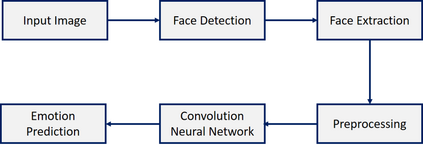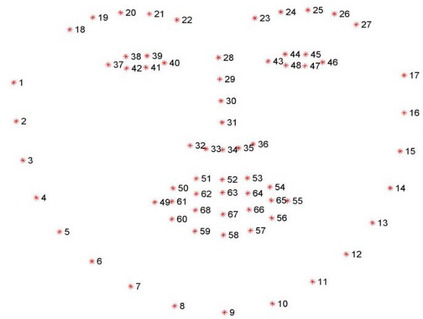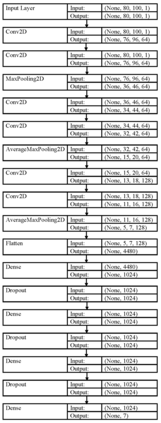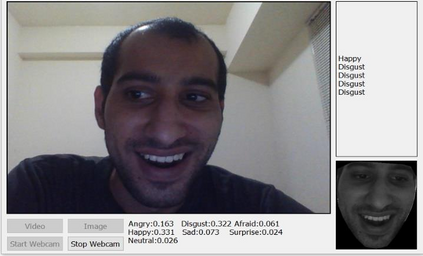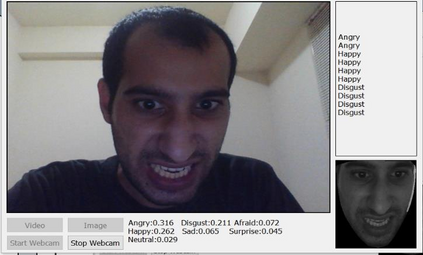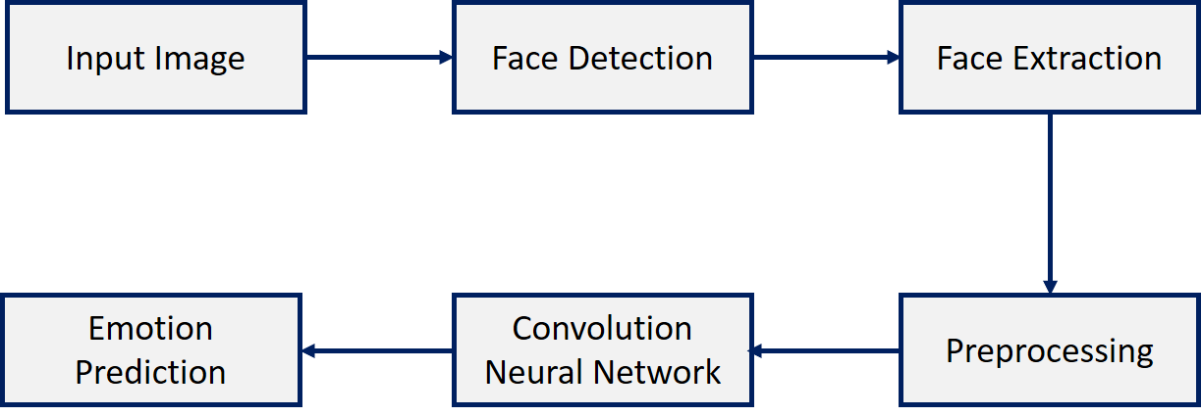Facial expressions vary from person to person, and the brightness, contrast, and resolution of every random image are different. This is why recognizing facial expressions is very difficult. This article proposes an efficient system for facial emotion recognition for the seven basic human emotions (angry, disgust, fear, happy, sad, surprise, and neutral), using a convolution neural network (CNN), which predicts and assigns probabilities to each emotion. Since deep learning models learn from data, thus, our proposed system processes each image with various pre-processing steps for better prediction. Every image was first passed through the face detection algorithm to include in the training dataset. As CNN requires a large amount of data, we duplicated our data using various filters on each image. Pre-processed images of size 80*100 are passed as input to the first layer of CNN. Three convolutional layers were used, followed by a pooling layer and three dense layers. The dropout rate for the dense layer was 20%. The model was trained by combining two publicly available datasets, JAFFE and KDEF. 90% of the data was used for training, while 10% was used for testing. We achieved maximum accuracy of 78.1 % using the combined dataset. Moreover, we designed an application of the proposed system with a graphical user interface that classifies emotions in real-time.
翻译:每个随机图像的亮度、对比度和分辨率因人而异,各异,每个随机图像的亮度、对比度和分辨率也不同。这就是为什么辨别面部表情非常困难的原因。本文章建议建立一个高效的系统,对七种人类基本情感(愤怒、厌恶、恐惧、快乐、悲伤、惊讶和中性)进行面部情感识别,使用共进神经神经网络(CNN)来预测和分配每种情感的概率。因此,由于深层学习模型从数据中学习,因此,我们提议的系统处理每个图像,并采用各种预处理步骤进行更好的预测。每个图像都首先通过面部检测算法传送,以纳入培训数据集。由于CNN需要大量的数据,我们使用各种过滤器复制了我们的数据。预处理的80*100大小图像被传送到CNN第一层。使用了三个相动层,然后是集合层和三层密密层。由于将两个公开提供的数据集JAFFFE和 KDEFF. 90%的数据用于培训。由于CNN需要大量的数据,我们使用各种过滤器来复制数据,因此使用了10 % 用于测试。我们所设计的图形的图像界面。我们用了一个最精确的系统。

